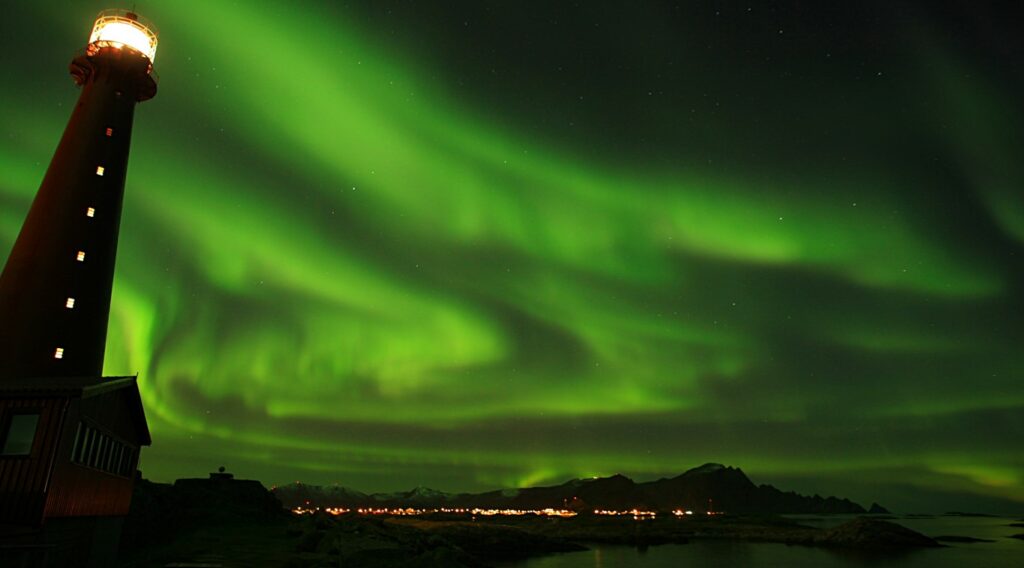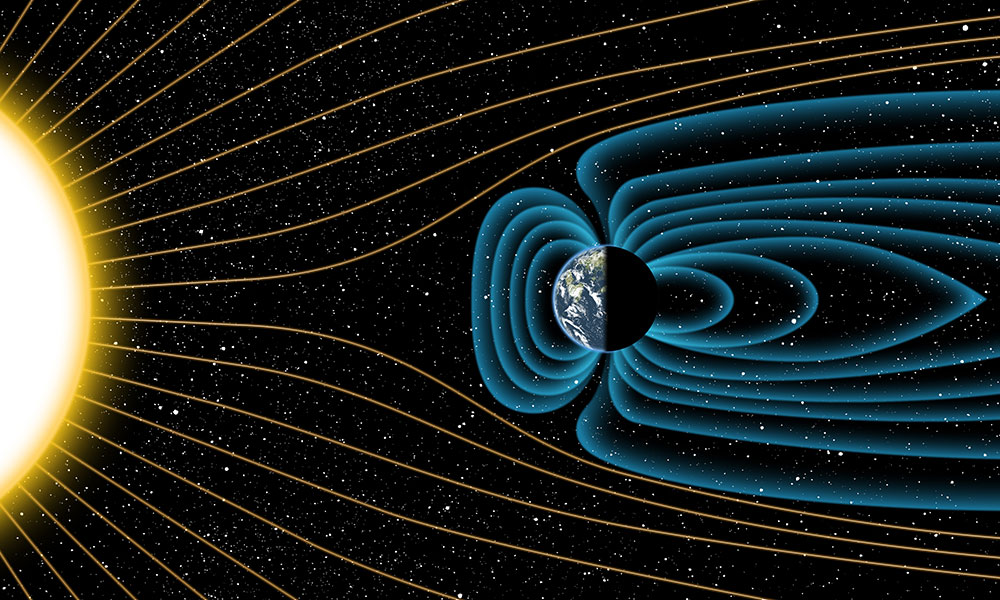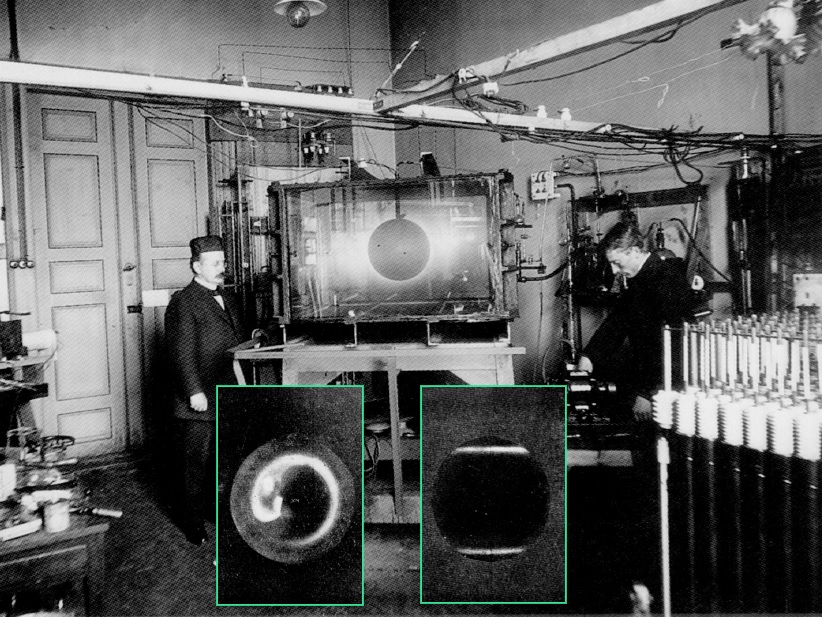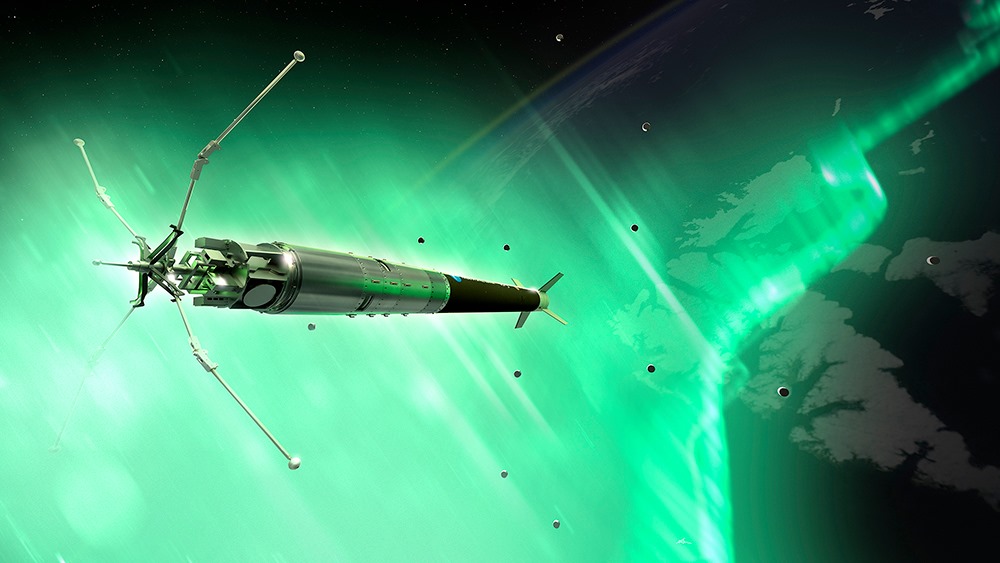Myths and legend
The northern lights have aroused the curiosity of humanity throughout history. Obviously, those cultures settled at higher latitudes were the ones that most developed myths about these strange lights that are usually seen in the dark skies in the polar regions.
The Northern Lights were seen in ancient Norse mythology as a bridge between Earth and Åsgård, the heaven reserved for warriors who died in battle. In the following image, the warrior on the left is waiting to cross the bridge, which at this moment has a defect, a missing part, which was interpreted as a bad sign. On the right, the creatures of Åsgård wait to entertain the warriors who have died in battle. The rewards for giving your life in battle were great parties in Åsgård.

In addition, there are records by other cultures established in middle latitudes. It is believed that some drawings found in caves in the South of France, around 30 000 years ago, in the Cro-Magnon era, refer to the northern lights. Eastern Asian cultures, like the Chinese, also picked up these strange lights with myths and allusive legends. Greek and Roman civilizations have also echoed them, and it is even believed that some Old Testament passages describe auroral phenomena. The northern lights continue to inspire artists of all kinds.

It was in the 18th century when important attempts to give a scientific explanation to this phenomenon started, despite some previous ones based on erroneous premises.
What are the northern lights?

In places located at high latitudes, like Norway, we often see the northern lights (aurora borealis) on clear evenings. The northern lights are far more common in northern Norway than in southern Norway. The phenomenon extends like a luminous band around the magnetic north pole. Therefore, this oval is not concentric with the Earth’s rotation axis but has a certain inclination. Areas at 69 degrees latitude are below the center of the auroral oval during the night-time, while this is happening for areas around 80 degrees for the daytime aurora oval. A similar phenomenon is found in the southern hemisphere. It is called the southern light (aurora australis). The common word for northern and southern lights is auroras.
Northern lights and the geomagnetic field
The English scientist Sir Edmund Halley, saw the most beautiful northern light of the 18th century in 1716. Halley explained the aurora as follows: ‘The auroral rays are due to the particles, which are affected by the magnetic field; the rays are parallel to the Earth’s magnetic field, and the shape of the vault is due to perspective phenomena.’ This is the first scientific finding that was accepted at that time and is still true. Halley, of course, is not known for the northern lights but for Halley’s comet, whose movement he could predict.
A multitude of theories was presented to explain the northern lights. A common proposal was to include a burning gas as a key part of the theory. Some of the theories of this kind had already been introduced by the ancient Greeks, more than 2 000 years before. In 1741, the Swedish scientist, Celsius, observed a connection between the northern lights and magnetic activity. In fact, he stole the result and the resulting honour from his student Hjorter. However, we should consider this result as the second correct scientific finding in the northern lights, which has been accepted since it was proposed.
The next illustration shows the geomagnetic field. This is a simple magnet created because of the movement of charged particles in the interior of the Earth. It would be symmetric in absence of external interaction.

We see it asymmetric because of the solar wind. This pushes the dayside lines of the geomagnetic field and elongates the night side by forming recombinations of the dayside field lines that move towards the night side. The next slide shows the magnetic field lines and how they are deformed due to the interaction with the solar wind. This is the typical appearance of the Earth’s geomagnetic field lines. The major amount of lines elongate and concentrates on the night side.

Northern lights and the Sun
In 1859 the English amateur astronomer Richard Carrington also connected a very strong aurora to an event he observed on the Sun 17 hours earlier. However, no physical explanation was presented. This is called the Carrington Event.


The northern lights are often associated with major eruptions in the sun, solar storms, or corona holes. In the solar magnetic storms, the magnetic field energy is converted into kinetic energy that can release plasma out of the sun. Therefore, the aurora phenomenon starts in the sun, due to solar activity, and is produced because of the interaction of these particles with the earth’s magnetic field. On some occasions, the magnetic field of the Earth and the magnetic field associated with the bubble of plasma that is coming from the Sun coupled, and the particles from the Sun drive through the Earth’s magnetic lines to the polar areas, where they encounter the higher layers of the atmosphere.
The eruptions occurred near large spots on the sun. In these spots, the magnetic fields are powerful and evolve in a complicated way. The magnetic fields can suddenly produce a ‘short circuit’ and cause powerful explosions that drive an important amount of energy released into space. The next picture shows some of these eruptions and how a giant cloud of gas is thrown out, on some occasions in the direction of the Earth.

When the solar particles enter the Earth’s atmosphere they collide with atoms. The energy is transferred from the particles to the atoms. The electrons of these atoms are kicked up to higher energy states or can be completely loose. Later, these electrons release the energy coming back to the original stage by emitting a photon with certain energy (wavelength) related to the jump between states. Other atoms trap lost electrons. Note that the electrons are the same so it may well be electrons coming from other atoms. This is the light we experience as northern lights!
The northern lights are located in an oval around each of the magnetic poles. These grow wider when the activity increases, for example after a strong flare happens in the sun. Thus, the northern lights can be visible from southern latitudes, like southern areas in Norway. In very rare cases, northern lights can be even observed from northern parts of Africa and Mexico. Once it was reported the observation of auroras in Singapore, which is almost at the equator.

To the naked eye, the northern lights often look like a moving curtain, usually green, like waves in wind. Historically, the people thought they were quite low, and even that it was possible to reach them by going to mountains. However, the northern lights’ lower parts are located around 100 kilometres over the sea level.
Why different colours?
The colours of the aurora are probably what makes most of its charm. When people think about the aurora, they usually imagine green curtains dancing across the sky. In reality, the aurora harbours many more colours! They are related to several factors.

The most important is the entity (atom …) present: much like a neon tube glows red when its gas atoms are excited by electricity, each atom or molecule of the upper atmosphere produces a glow with a very characteristic colour (wavelength) when they’re hit by solar particles. These specific colours can be viewed in an emission band spectrum measured by a spectrometer. Our eyes interpret the wavelengths as different colours. The transitions in our atmosphere are mainly produced by oxygen and nitrogen.
The main entities responsible for the aurora are monoatomic oxygen (O), diatomic nitrogen (N2), and ionized diatomic nitrogen (N2+). Oxygen emits either a red-orange or a lemon-green glow. N2 emits a deep red glow while its ionized form emits a deep blue/purple glow. Sometimes the colour limits are quite defined but most of the time the entities mix with currents at different altitudes and create other colours like pink, yellow, emerald-blue, magenta, and purple. During periods of intense geomagnetic storms, you can potentially get a lot of different colours at once. It’s also to be noted that there are other entities than O, N2, and N2+ at these altitudes: hydrogen, NO, helium … etc. Nevertheless, their interaction with solar particles doesn’t produce an auroral glow.
Altitude: the altitude determines what sort of entities are present in the air mixture. In addition, it plays a key role in allowing the entities of the atmosphere to glow. It’s all related to its density (number of entities per unit volume of the atmosphere). As a rule, the density decreases as we get further away from the Earth’s surface. This also applies to the part of the atmosphere where the aurora is created from ~ 80 km (mesosphere) to ~ 500 km (exosphere). Even at 80 km of altitude, the air is already very thin and you wouldn’t even be able to breathe. Above 300 km the density of the air is so low that the entities are too far apart from one another and rarely even bump into each other anymore! This has an impact on the colours. Certain entities take more time to emit the photon of light once hit by an electron. If another entity collides with the former before it has time to glow, it steals its energy and no glow is created! So the denser it is, the shorter time the entities have to produce the glow.
In the figure below you can see how different transitions at different altitudes create colours.

Northern lights research in Norway
Norway is perfectly located on the globe for research on northern lights. The first serious scientific attempt to explain the aurora was done by Kristian Birkeland around 1905. He was the first to test that the phenomenon could be related to particles coming from the Sun. In order to check this hypothesis, he built an experiment, the Terella, with a magnetized ball representing the Earth being bombed by particles.

Active research on the northern lights is ongoing in Norway. Andøya Space is an important place for making research ‘on-site’ by sending rockets with instruments for registering measurements throughout the northern lights. In addition, several ground-instrumentation is placed in Andøya and other places in Northern Norway dedicated to the understanding of this phenomenon. In Svalbard, the northern lights are observed during day time. The physical mechanisms involved are different. A complete picture of the northern light and geomagnetic field is given by combining research from both the night and dayside. In Svalbard, the polar night is sufficiently dark that it is easy to study the daytime aurora. In addition, the archipelago is often located just below the northern light oval during the middle of the day.

Example of strong northern lights
In October 2001, several powerful northern lights were visible from Southern Norway. Sunday the 21st and Monday the 22nd of October fantastic northern lights were observed. The sky crackled in red and green and stripes pointed out in all directions. For many experienced viewers, this was one of the most beautiful northern lights in many years.
The northern lights were due to two powerful eruptions of the sun on the 19th of October. A new powerful eruption occurred on the 25th of October, but this did not have effects on earth. When the northern lights activity is very high, the northern lights oval is pushed so far south that it lies over southern Norway. In this particular case, it was possible to see over the head instead of towards the north. This often develops into a so-called ‘corona’, as shown below. During the corona, the northern light points out in every direction.

<< Previous chapter – Content – Next chapter >>
This article is part of a pre-course program used by Andøya Space Education in Fly a Rocket! and similar programs.
